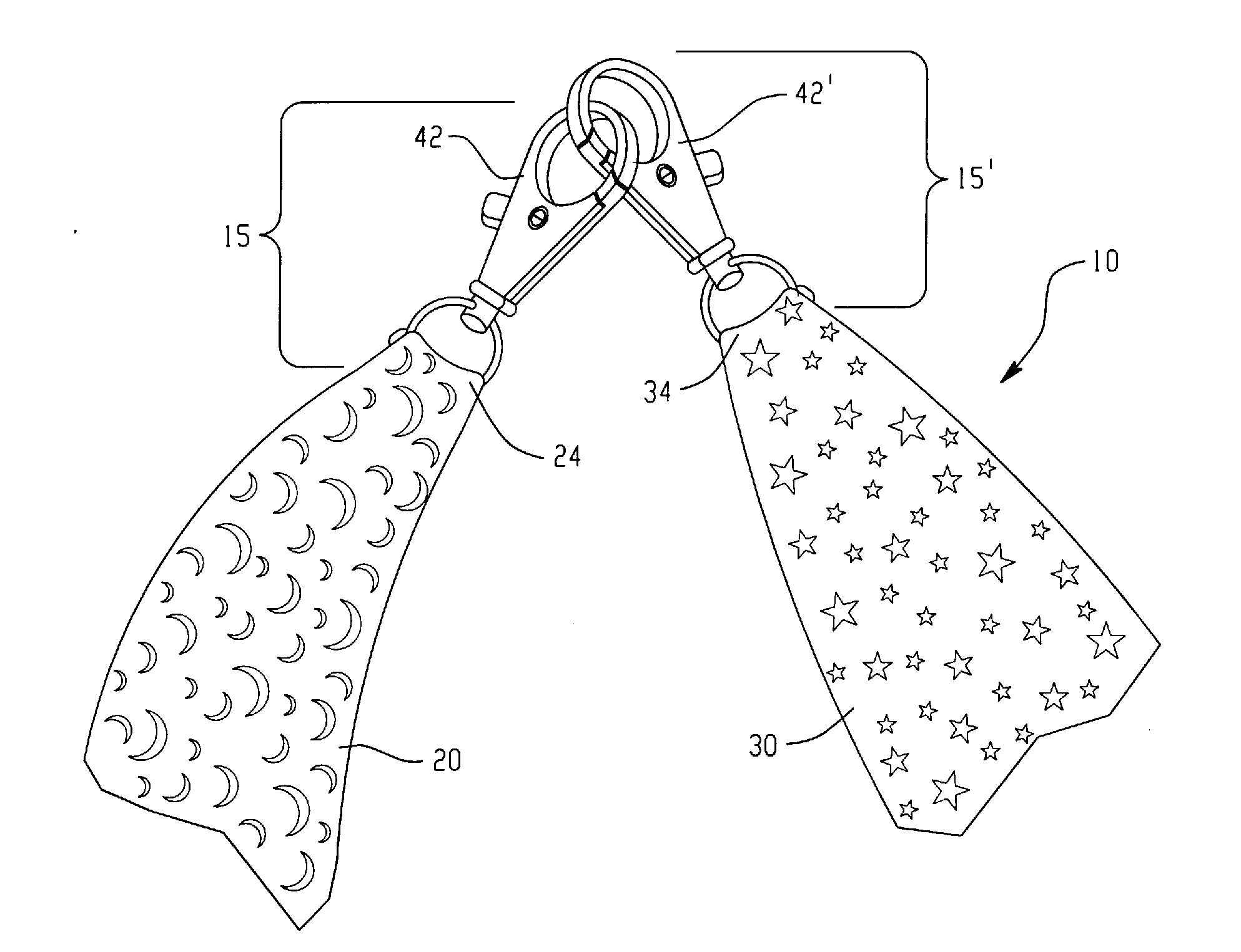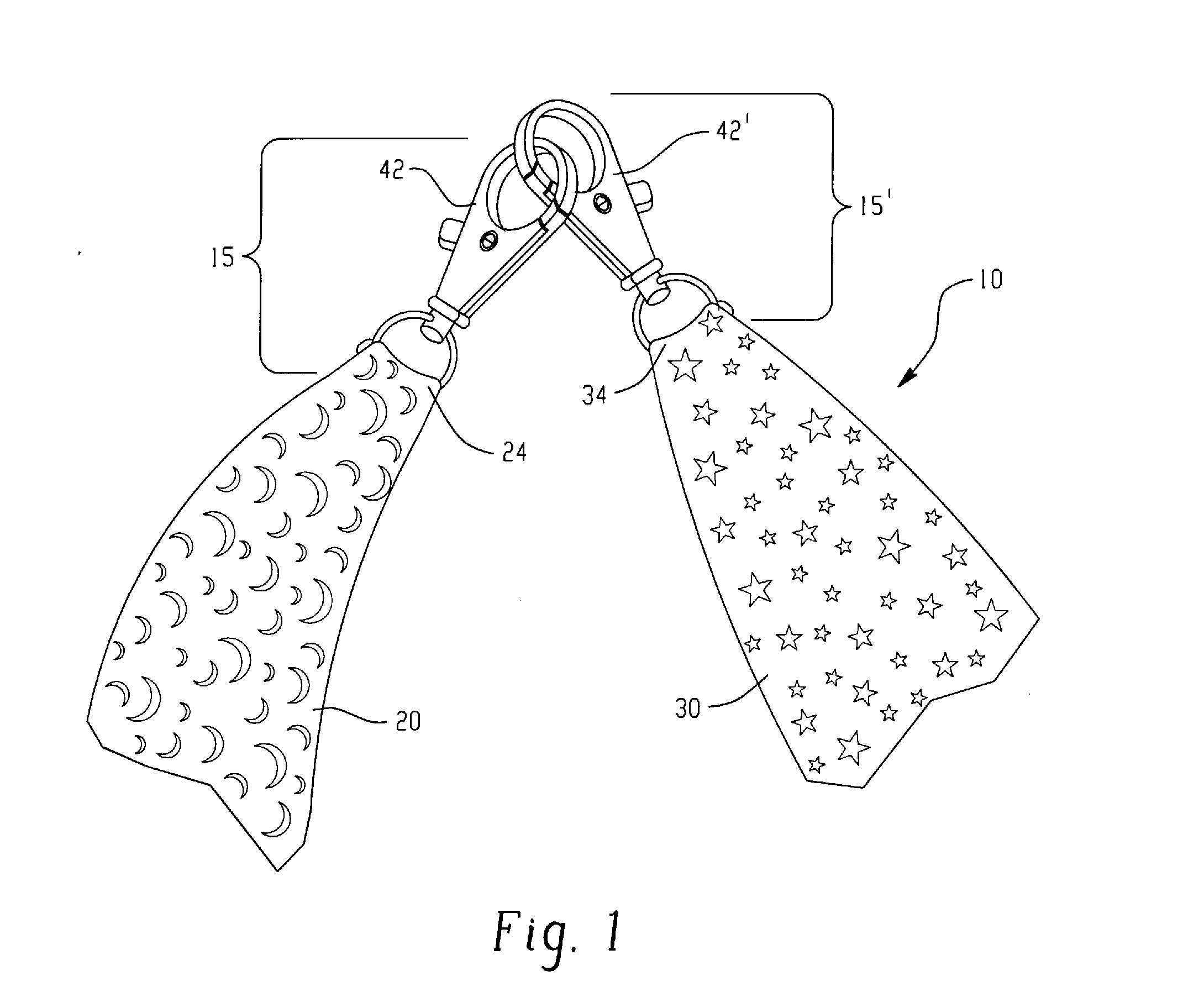Convertible scarf
a convertible scarf and scarf technology, applied in the field of convertible scarfs, can solve the problems of tie, too traditional, constricting, etc., and achieve the effect of reducing the number of times of need and ensuring the comfort of wearing
- Summary
- Abstract
- Description
- Claims
- Application Information
AI Technical Summary
Benefits of technology
Problems solved by technology
Method used
Image
Examples
Embodiment Construction
[0013]As depicted in FIGS. 1-7, embodiments of the convertible scarf 10 comprise at least a first section 20 and a second section 30. Each section 20, 30 may be in the shape of all or a part of a necktie or bow tie (as shown in FIG. 3A), in the shape of a conventional scarf, or in another desired shape. In some embodiments, the sections 20, 30 are composed of material similar to that from which neckwear such as neckties, bow ties, and scarves traditionally are manufactured and, as shown in FIG. 6, may be lined in a manner similar to the emulated neckwear. The sections 20, 30 may even be fashioned from a wearer's existing necktie collection. In the alternative, the sections may be made from any pliable material suitable for use as a scarf, including but not limited to yarn, paper, rubber, plastic, or even duct tape. The sections 20, 30 preferably are of a length and width sufficient to be worn as a scarf, typically being from 9-40 inches in length and 1-5 inches in width for an adult...
PUM
 Login to View More
Login to View More Abstract
Description
Claims
Application Information
 Login to View More
Login to View More - R&D
- Intellectual Property
- Life Sciences
- Materials
- Tech Scout
- Unparalleled Data Quality
- Higher Quality Content
- 60% Fewer Hallucinations
Browse by: Latest US Patents, China's latest patents, Technical Efficacy Thesaurus, Application Domain, Technology Topic, Popular Technical Reports.
© 2025 PatSnap. All rights reserved.Legal|Privacy policy|Modern Slavery Act Transparency Statement|Sitemap|About US| Contact US: help@patsnap.com



